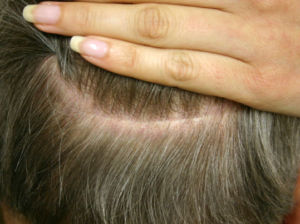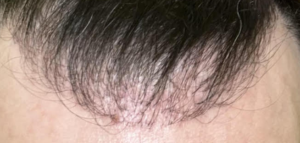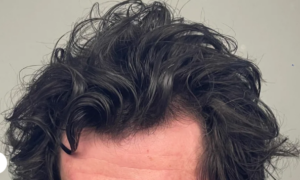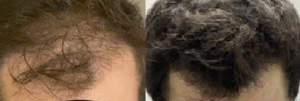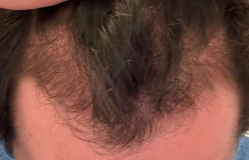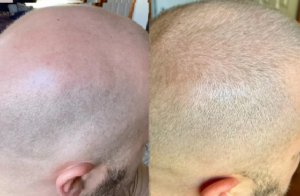As only 50% of men have genetic balding, that means that 505 of male models probably are not using any drugs to retain their hair
Age: 28: I was quoted 3800 grafts (3000 scalp, 600 chest and 200 beard) for the front and another surgery for the crown (which idk how many grafts it will still need). Thoughts on:
Frontal density regarding 3800
Would the donor area hold up for 7000 grafts overall?
I won’t take any medications but considering using min
Would I risk over harvesting with 7000 grafts?
Would you recommend another clinic?
My theme is to focus on where you are now in your balding cycle. Is your hair fine, medium or coarse? Coarse hairs have 10 times the value per hair compared to fine hair. What is your average donor density? Knowing these numbers will allow YOU to decide how many grafts from your total donor supply you should use on this first procedure and what areas you will cover. In your case, you will likely develop a Class 7 pattern, so if you use up all of your donor supply now, then what is next? Beard hair has value on top and in the crown and can increase your available hair (usually 2000-3000 hairs available for transplantation); however, chest and arm hair has very little value because (1) the hair cycle is very short and the telogen cycle is long which means that only about half of the hairs transplanted will be growing at any one time, and (2) body hair is fine, which means it brings little value.
Too many doctors don’t put together a Personalized Master Plan for their patients, so that is what I am showing you here. You asked me for an opinion, so I would transplant about 3000 grafts for the frontal area and into what appears to be a thinning bridge and stop there. Of course, that number will vary depending on your hair thickness. For example, if your hair was coarse, I might only transplant 2000-2200 grafts, but if your hair was fine, I might go to 3000-3300 grafts. The impact on the donor area with coarse hair will be negligible, while the impact of taking 3300 grafts with FUE from the donor area will be significant. The consequence of donor depletion is found more with fine hair than coarse hair men.
I saw two different dermatologists. The first just ran her fingers through my hair and said I had alopecia. She recommended minoxidil topical and neutrofol. The second used a microscope, and I think she said I had telogen effluvium. She recommended minoxidil 2.5 mg and a topical mixture from a compounding pharmacy of minoxidil along with a small amount of finasteride (I think 7% minoxidil with 1% finasteride). So, based on what I have read, I thought I would try 1.25 mg oral minoxil. I know you can’t give advice, but in general, is topical minoxidil along with oral minoxidil necessary? Do you think finasteride is necessary for those with a lot of hair and have caught this early? Are there any other DHT, i.e. saw palmetto, etc. blockers that have been found to help with hair loss? Also, is it ever too early to start derma rolling?
Telogen Effluvium in a healthy young man is very unusual. If a young man has hair loss, it is genetic in over 90% of men. Did the doctor determine where and how much miniaturization you had? How did the dermatologist determine you had TE? What you need is a solid diagnosis before committing a lifetime to drugs.
In the past year, I underwent a hair transplant and have consistently used 1mg finasteride along with 1ml topical minoxidil twice daily. Throughout this time, I maintained a sedentary lifestyle without weight training, and there was no extreme shedding. However, in the last two months, I started a regular workout routine. Unfortunately, I’ve observed a significant increase in hair fall recently, causing some concern. I know that most people from this community won’t agree with me and might consider this a coincidence, but this feels like a reality to me. Keeping myself healthy and working out is something I’m going to keep doing anyway, but I also want to control the hair fall. After consulting with my doctor, he suggested doing more aerobic exercises than resistance exercises. Can that make any difference? Should I consider altering my workout routine? Any suggestions would be appreciated.
Ask your surgeon how much miniaturization was present in the native hair that you had when you were transplanted. If your miniaturization was advanced, that would explain the hair loss. Usually (over 80% of men who take finasteride after a hair transplant are protected from shock loss). I would have expected that taking finasteride protects the miniaturized hairs present at the time of the hair transplant. But the finasteride protection rule is not 100%. I don’t believe that exercise had anything to do with your hair loss.
This man will have to take a second pass at the transplant, this time with a better surgeon. 2000 grafts should have filled his frontal hairline reasonably well. Also, note that the hairs are pointing to the sides, like the spokes of a wheel. This is a common mistake made by surgeons that seem to have a problem learning which direction the hair grows. Forward!
The clinics told me that your transplanted hairs are not sensitive to DHT, but I hear everyone here many people saying that these hairs can also fall out, is this correct?
Transplanted hairs from the donor area are protected against DHT and balding; however, your native hair is not and if you have any miniautirzed hairs in your head, they will fall out unless you are on finasteride. In addition, your pattern of balding will advance, so finasteride slows that down.
Is it normal to lose short hairs if you don’t have MPB
If one gets a crew cut, then when the anagen hairs go into telogen, then you will shed the short hairs as that is the only hair that they have. Every hair on your head goes into telogen every 2-3 years and recycles. In women, the cycle may be longer than 2-3 years on average, especially younger women. That means that there is a limit to the length a hair can grow, which is totally dependent on the duration of the anagen component of the hair cycle.
No more panic attacks after starting fin, also testosterone stabilized to higher value
Most men on finasteride find that their testosterone levels rise in the blood tests. The body’s feedback loop responds to a reduced DHT presence from the finasteride.
What you should know about the hair density of a transplanted hairline. The results of the end product depend upon the following:
-
The appearance of thickness comparable to where they were before they became bald.
-
The color contrast between your hair and scalp color. The closer the match, the better the transplant looks.
-
Many transplants from Turkey appear to push graft numbers high. Where I might put 1500-2000 grafts in the first 2 inches of the hairline, many Turkish clinics (with or without a doctor on staff) have technicians or inexperienced doctors deciding graft numbers. They tend to over-shoot the numbers without being able to mechanically place the grafts close enough to get anywhere near their original hairline density without getting necrosis as a complication of the surgery. Good doctors shoot for appearance and fullness; by doing so, they don’t waste the donor hair supply in the first surgery. In my hands, fewer grafts for comparable balding areas than most of the Turkish clinics produce the same appearance of fullness for the area transplanted.
Always remember that Hair Loss is progressive, even after a hair transplant. If you waste your donor hair on the first 2 inches of your hairline with, let’s say 4000 grafts, you have used up more than half of your donor hair supply for the rest of your life.
Page 22 of 1234


